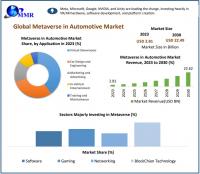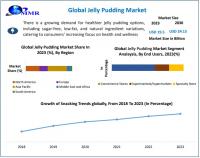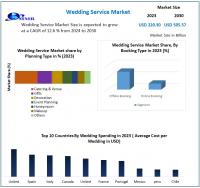(EMAILWIRE.COM, March 10, 2022 ) The report “Electric Vehicle Adhesives Market by Application (Powertrain, Exterior, Interior), Resin Type, Substrate, Form (Liquid, Film & Tape), Vehicle Type (Electric Car, Electric Bus, Electric Bike, Electric Truck), and Region – Global Forecast to 2026″, size is estimated to be USD 0.4 billion in 2021 and is projected to reach USD 1.8 billion by 2026, at a CAGR of 44.7% between 2021 and 2026.
Download PDF brochure of the Report @ https://www.marketsandmarkets.com/pdfdownloadNew.asp?id=194059535
The rising trade war tensions between the US and China and low labor costs in China have forced various end-users of adhesives to relocate and establish their manufacturing base in the ASEAN countries. This relocation is expected to increase the demand for adhesives in the ASEAN countries. India offers low-cost labor, which can provide significant investment opportunities for companies. Government initiatives such as Make in India and the proposed scheme on entrepreneurship development by the government may open up additional opportunities in the industrial and infrastructure construction segments. All these factors are expected to drive the market in APAC.
By application, Exterior account for the largest share in the EV Adhesives Market
The rising production and sale of electric cars have increased the demand for batteries, electric motors, doors, instrument cluster, infotainment system, seats, various panels, and charging sockets. Batteries are the most important components of electric cars as they provide power to the car. The battery of the car is heavier than the other parts. In order to counter the weight of batteries and reduce the overall weight of electric cars, lightweight materials are used in electric car applications. In the electric vehicle industry, adhesives are used in place of welds, screws, rivets, gaskets, and fasteners, which allows automakers to make the vehicle lightweight. One of the concerns in electric vehicles is range. Automakers are addressing this issue by increasing the battery capacity of the vehicle.
The design of electric vehicles has to be lightweight to counter the weight of the battery system used in electric vehicles. The bonding of dissimilar materials is done with the help of structural adhesives to replaces fasteners, rivets, and spot welding, which contributes to reducing the weight of vehicles. The use of structural adhesives also addresses the issue of crashworthiness and safety of battery systems in electric vehicles. With the continuous development in technology, the consumption of adhesives in the exterior parts of electric vehicles will further increase during the forecast period.
By resin type, Polyurethane account for the largest share in the EV Adhesives Market
The use of adhesives in EV is expected to increase during the forecast period. The various applications of adhesives in EV require different types of adhesives derived from resins such as epoxy, polyurethane, silicone, and acrylic. Adhesives made of different resins have different properties and are chosen according to the specific application.
Polyurethane adhesives are made of urethane polymers. They exhibit extraordinary elasticity and elongation up to 600% before fracture. There are three types of polyurethane adhesives, two-component polyurethane, one-component rigid polyurethane adhesives, and two-component elastic polyurethane adhesives. The bonds of polyurethane adhesives are formed in two stages: firstly, the adhesive cools back down to reach the holding strength and, secondly, the adhesive uses the moisture to continue curing for hours to days to reach the final structural strength.
Browse in-depth TOC on “Electric Vehicle Adhesives Market
534 – Market Data Tables
52 – Figures
344 – Pages
Don’t miss out on business opportunities in Electric Vehicle Adhesives Market. Speak to Our Analyst and gain crucial industry insights that will help your business grow. https://www.marketsandmarkets.com/speaktoanalystNew.asp?id=194059535
By vehicle type, Electric cars account for the largest share in the EV Adhesives Market
The demand for EVs is increasing at a rapid pace due to growing environmental concerns, even as the sale of ICE vehicles is seeing a slump. The implementation of favorable policies for EVs and technological advancements in the value chain will drive the EV market in the next five years. The growth of electric cars and buses is expected to drive the growth of EV adhesives during the forecast period.
Vehicle manufacturers announced increasingly ambitious electrification plans. Out of the worlds top 20 vehicle manufacturers, which represented around 90% of new car registrations in 2020, 18 have stated plans to widen their portfolio of models and to rapidly scale up the production of light-duty electric vehicles. The growth of electric cars is driven by critical policy changes adopted by leading countries in electric mobility. These countries have introduced stricter emission standards in addition to incentives for electric cars and are promoting investments in the EVs industry value chain to bring price parity between EV and ICE vehicles. In an EV, adhesive technology plays a critical part in making the EV lightweight as it is used in a number of applications. The growing EV markets such as Europe, APAC, and North America will provide growth opportunities for EV adhesive manufacturers during the forecast period.
APAC accounted for the largest share in the global EV adhesives market
APAC accounted for the largest share of the EV Adhesives Market in 2020, followed by Europe and North America. The rising trade war tensions between the US and China and low labor costs in China have forced various end-users of adhesives to relocate and establish their manufacturing base in the ASEAN countries. This relocation is expected to increase the demand for adhesives in the ASEAN countries. India offers low-cost labor, which can provide significant investment opportunities for companies. Government initiatives such as Make in India and the proposed scheme on entrepreneurship development by the government may open up additional opportunities in the industrial and infrastructure construction segments. All these factors are expected to drive the market in APAC.
The leading players in the EV Adhesives Market are Henkel (Germany), H.B. Fuller (US), Sika AG (Switzerland), 3M (US), Wacker Chemie AG (Germany), Bostik SA An Arkema company (France), L&L Products (US), Jowat SE (Germany), Ashland (US), PPG Industries, Inc. (US) and Permabond (UK).
Get Sample Pages of This Report @ https://www.marketsandmarkets.com/requestsampleNew.asp?id=194059535
About MarketsandMarkets
MarketsandMarkets provides quantified B2B research on 30,000 high growth niche opportunities/threats which will impact 70% to 80% of worldwide companies revenues. Currently servicing 7500 customers worldwide including 80% of global Fortune 1000 companies as clients. Almost 75,000 top officers across eight industries worldwide approach MarketsandMarkets for their painpoints around revenues decisions.
Our 850 fulltime analyst and SMEs at MarketsandMarkets are tracking global high growth markets following the Growth Engagement Model GEM. The GEM aims at proactive collaboration with the clients to identify new opportunities, identify most important customers, write Attack, avoid and defend strategies, identify sources of incremental revenues for both the company and its competitors. MarketsandMarkets now coming up with 1,500 MicroQuadrants (Positioning top players across leaders, emerging companies, innovators, strategic players) annually in high growth emerging segments. MarketsandMarkets is determined to benefit more than 10,000 companies this year for their revenue planning and help them take their innovations/disruptions early to the market by providing them research ahead of the curve.
MarketsandMarketss flagship competitive intelligence and market research platform, Knowledge Store connects over 200,000 markets and entire value chains for deeper understanding of the unmet insights along with market sizing and forecasts of niche markets.

























Discussion about this post